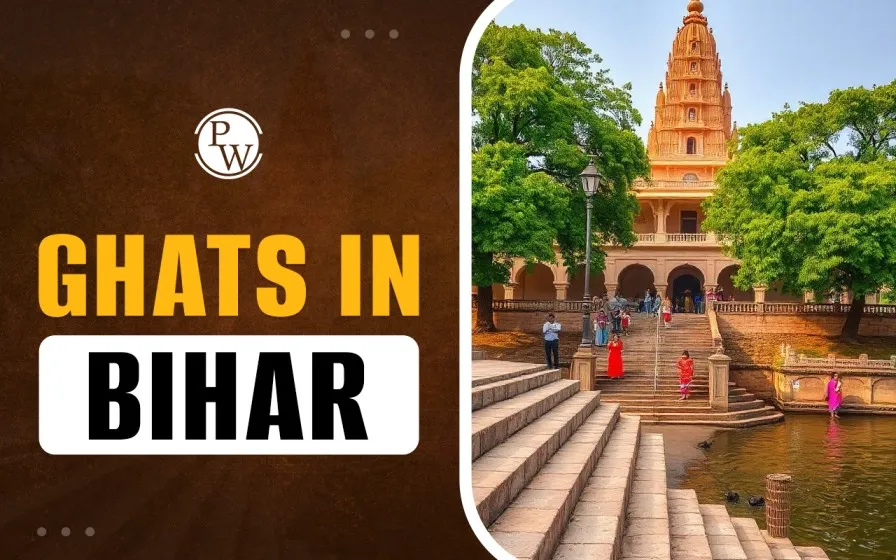
Ghats in Bihar: Bihar, the land of cultural, spiritual, and historical importance, is home to many ghats, especially along the banks of its sacred rivers. These ghats, which are steps leading down to the river, serve not only as places for spiritual rituals but also as integral hubs of daily life. The ghats of Bihar are places of pilgrimage, rituals, festivals, and reflection, symbolizing the strong connection between people and the rivers that nourish their land.
Also read: Smallest district in Bihar
Bihar is home to some of the most iconic and revered ghats in India. These ghats not only have religious significance but also historical and cultural value. Below are some of the most famous ghats in Bihar:
Patna, the capital city of Bihar, is located on the banks of the Ganges, and its ghats are among the most visited in India. There are over 50 ghats in Patna, each with its own unique history and importance. The Ganga Ghats in Patna are not only famous for their association with Hindu rituals but are also a historical testament to the ancient civilizations that flourished along the river.
Vaishali, located in the northern part of Bihar, is a place of great historical and religious significance. It is one of the oldest sites of Buddhist and Jain pilgrimage, as it was the birthplace of Lord Mahavira, the 24th Tirthankara in Jainism, and also an important site for followers of Buddhism. The ghats of Vaishali are quiet and serene, providing a space for meditation, reflection, and religious rituals.
Bodh Gaya is one of the holiest places for Buddhists, as it is here that Siddhartha Gautama (Buddha) attained enlightenment under the Bodhi Tree. While Bodh Gaya is primarily known for its Buddhist temples and the Mahabodhi Temple, the ghats along the Phalgu River provide a serene environment for pilgrims and tourists alike.
Also read: GI tag in Bihar
Munger, located in Bihar’s eastern region, is an important city known for its historical significance and religious importance. Munger is also famous for being a hub for yoga and spiritual teachings, attracting visitors from across the world. The ghats in Munger are not as well-known as those in Patna, but they are important religious sites, especially during the festivals.
The Sone River, one of the major tributaries of the Ganges, flows through Bihar, and its ghats are known for their natural beauty and historical importance. The Sone Ghats are located in Aurangabad district, which is situated in the south of Bihar.
Located in the town of Buxar, Ganga Sagar Ghat is another important ghat on the banks of the Ganges. Buxar is known for its association with the Mahabharata and Ramayana and is a significant place for religious ceremonies, particularly during the Ganga Sagar Mela, which attracts thousands of devotees.
Rajgir, located in the Nalanda district, is a place of great historical significance and is known for its association with Lord Buddha. The ghats in Rajgir are located near the Nalanda River and are popular for religious rituals, meditation, and Buddhist pilgrimages.
Also read: Biggest Mall of Patna
Historically, the ghats in Bihar have been places where kings, queens, and other influential figures performed religious and political rituals. The ghats were also an essential part of the Indus Valley Civilization, and many of the ghats in Bihar are thought to be centuries old, dating back to the time of the Maurya Empire.
In the city of Patna, the Ganga Ghats have witnessed significant historical moments, including important events during the reign of Mauryan rulers like Ashoka the Great, who promoted Buddhism and the peaceful ways of life. The ghats in Vaishali, a prominent place in Bihar's history, are also linked to the Buddhist and Jain faiths and have been places of veneration since ancient times.
Ghats in Bihar are more than just physical structures; they represent a spiritual space where devotees perform bathing rituals, prayers, and funeral rites. The rivers of Bihar, particularly the Ganges, are regarded as sacred by Hindus, and bathing in these waters is believed to purify the soul, cleanse sins, and even attain moksha (liberation). The ghats are integral to these beliefs and are visited by thousands of devotees each day, especially during important festivals and rituals.
The ghats also serve as centers of cultural exchange and community activities. Whether it’s offering flowers, lighting diyas (lamps), or simply sitting by the river and watching the world go by, the ghats reflect the lives of the people living along them. The spiritual rituals conducted on the ghats symbolize the eternal cycle of life and death, and many ghats are also associated with cremation and the dispersal of ashes.
Also read: Capital of Bihar
